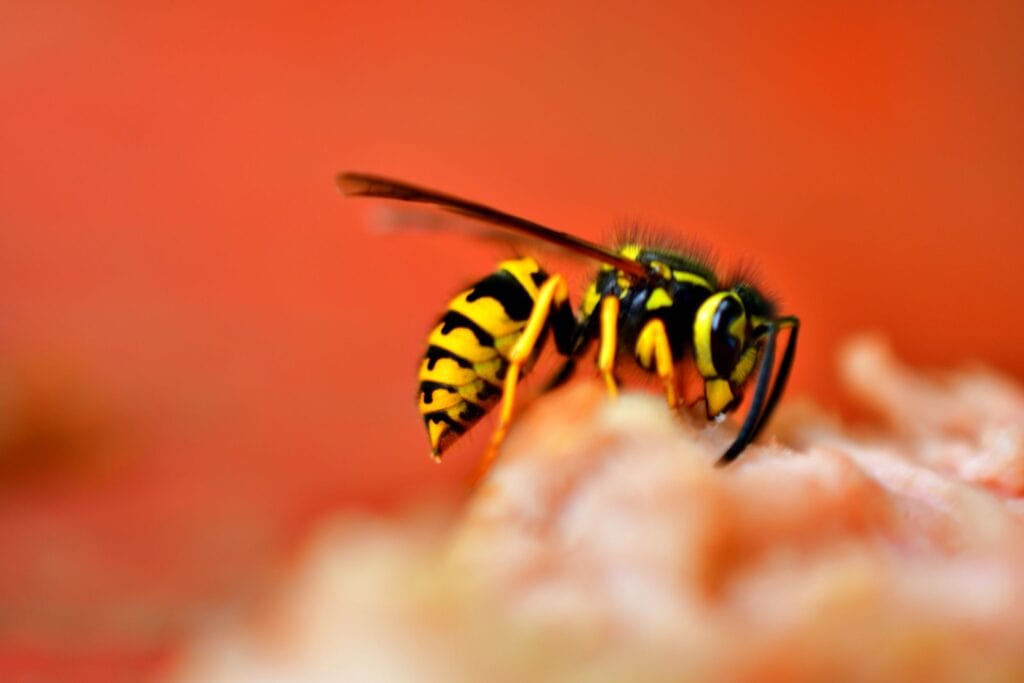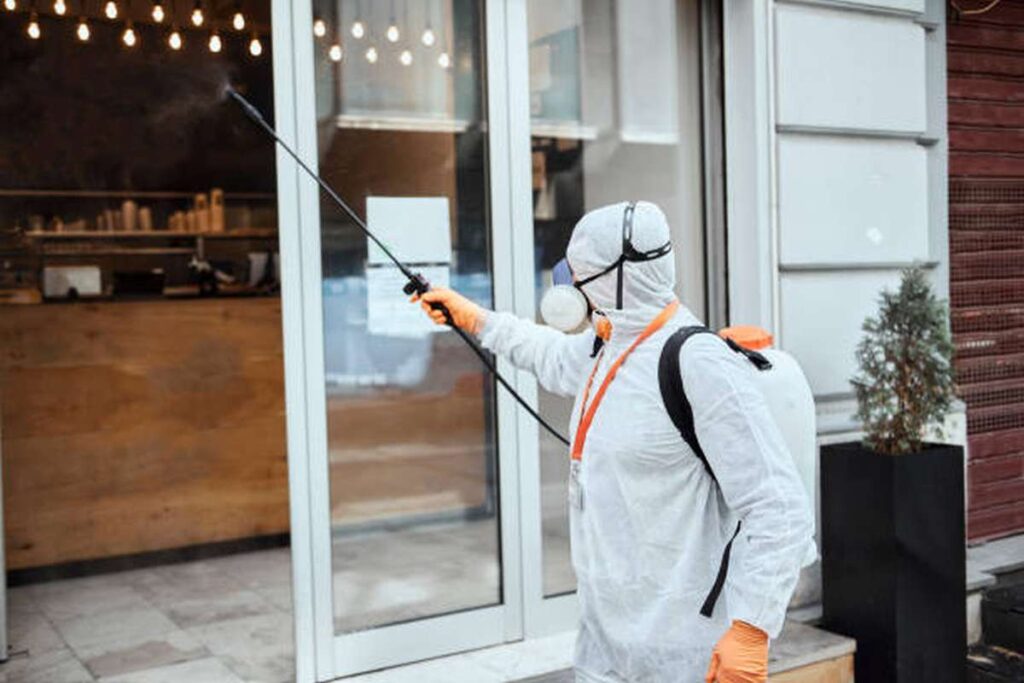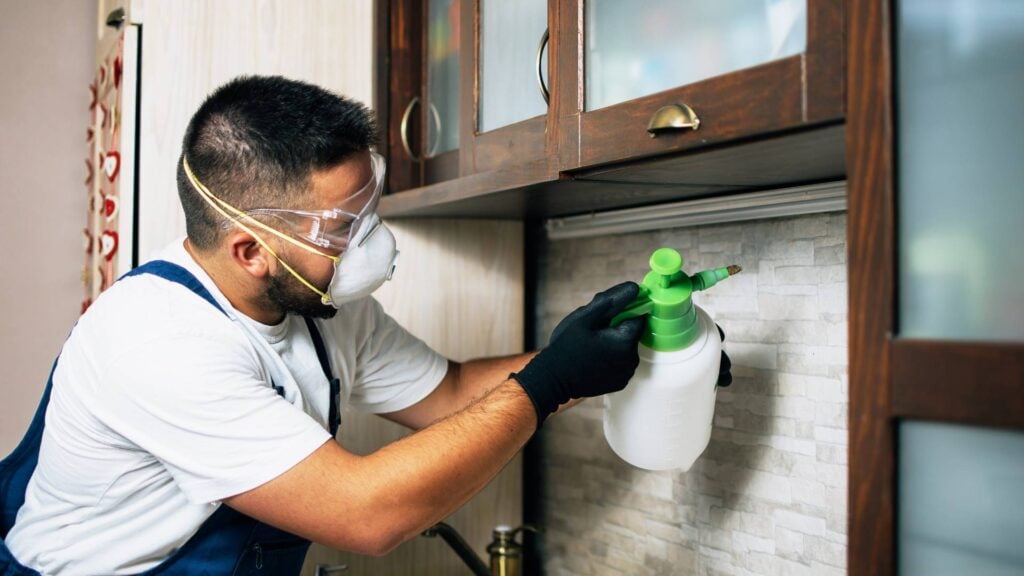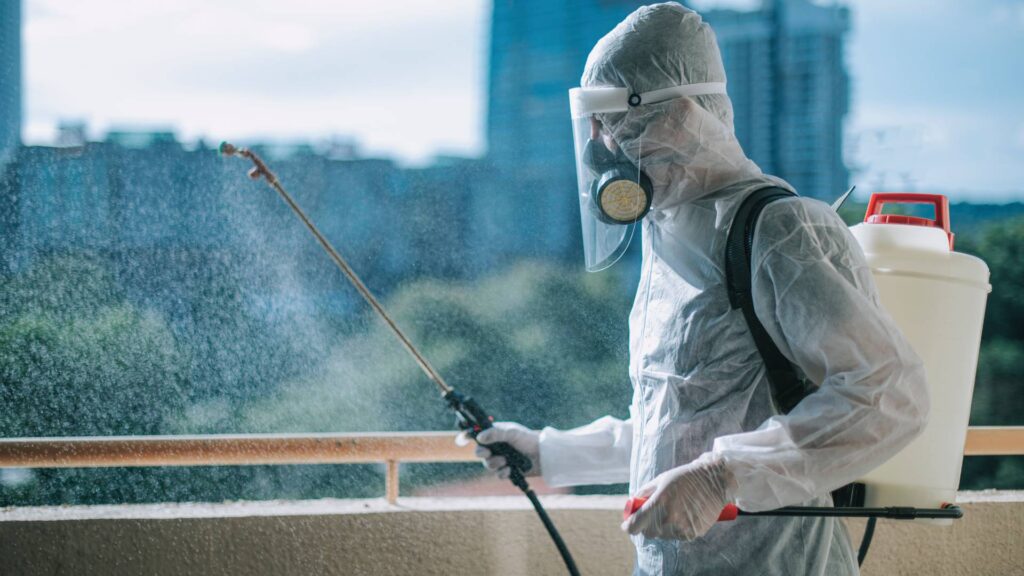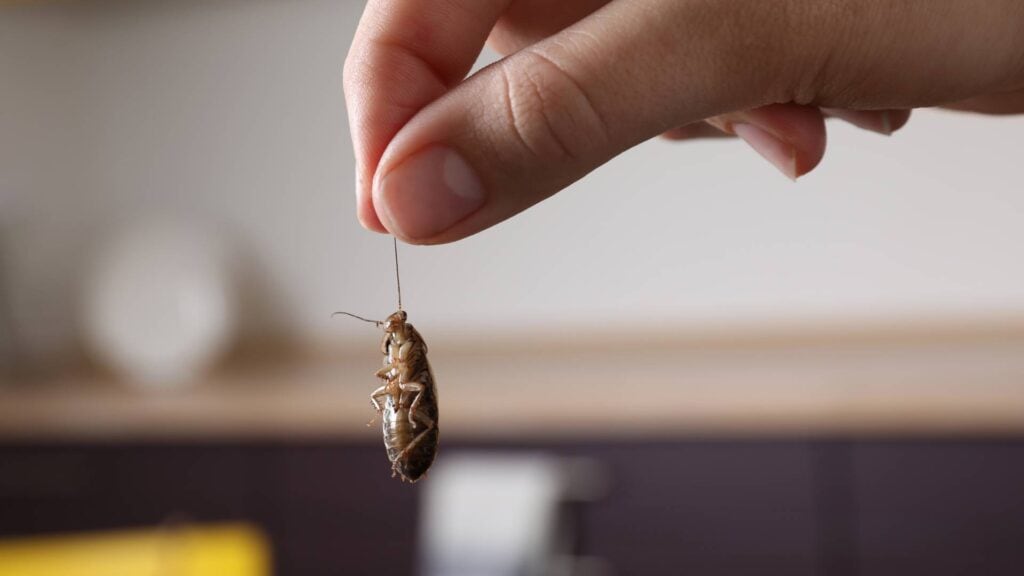Nests of wasps can pose a risk to those allergic to their sting, and these insects are a regular summertime nuisance. Wasps are a common nuisance because they can construct nests anywhere in and around human structures. If you want to go outside without being stung, this may be an issue.
You may take several approaches to thwart wasp nesting around your property. Wasps may get into your home through any gaps in the external walls, so sealing any you find is a good idea. Wasps can be discouraged by removing potential breeding grounds, such as garbage cans or bowls of pet food left outside. You may also prevent actual wasps from establishing nests by hanging imitation nests on your property. Hiring a most reliable pest control company in Melbourne. We are highly skilled in the extermination of any sort of vermin, from termites to birds. In order to complete the task in a timely and effective manner, our team of experienced specialists makes use of the most recent methods and tools available.
Remember to leave any wasp nests alone if they already exist on your property. Instead, it would be best if you contacted a pest control service to have the nest removed from your home. This blog advises how to stop wasps from establishing nests near your house. Following these guidelines, you may spend time outdoors without worrying about being stung by those annoying wasps and hornets. Read on for additional information and helpful hints on how to keep your house wasp-free this summer.
What Are Wasps?
Wasps, bees, and ants are insects classified in the order Hymenoptera. Wasps are easily recognisable by their long, lean bodies, two sets of wings, and tiny waists. They can range from just a few millimetres to several centimetres and can be any colour, from black to yellow.
Wasps utilise their stingers to defend their colony and themselves. Some animals are gregarious and live in colonies; others are prefered to be left alone. Several types of wasps are good for the environment because they eat problem insects. Some wasp species, however, are known to be aggressive and can even cause harm to humans. Wasps may attack if their nests are disturbed, so it's best to exercise caution near them.
Kinds of Wasps
Before we get into ways to stop wasps and bees from making a home in your walls, let's have a look at the most frequent species that do so, as well as their entry points and destructive habits.
European Honey Bees
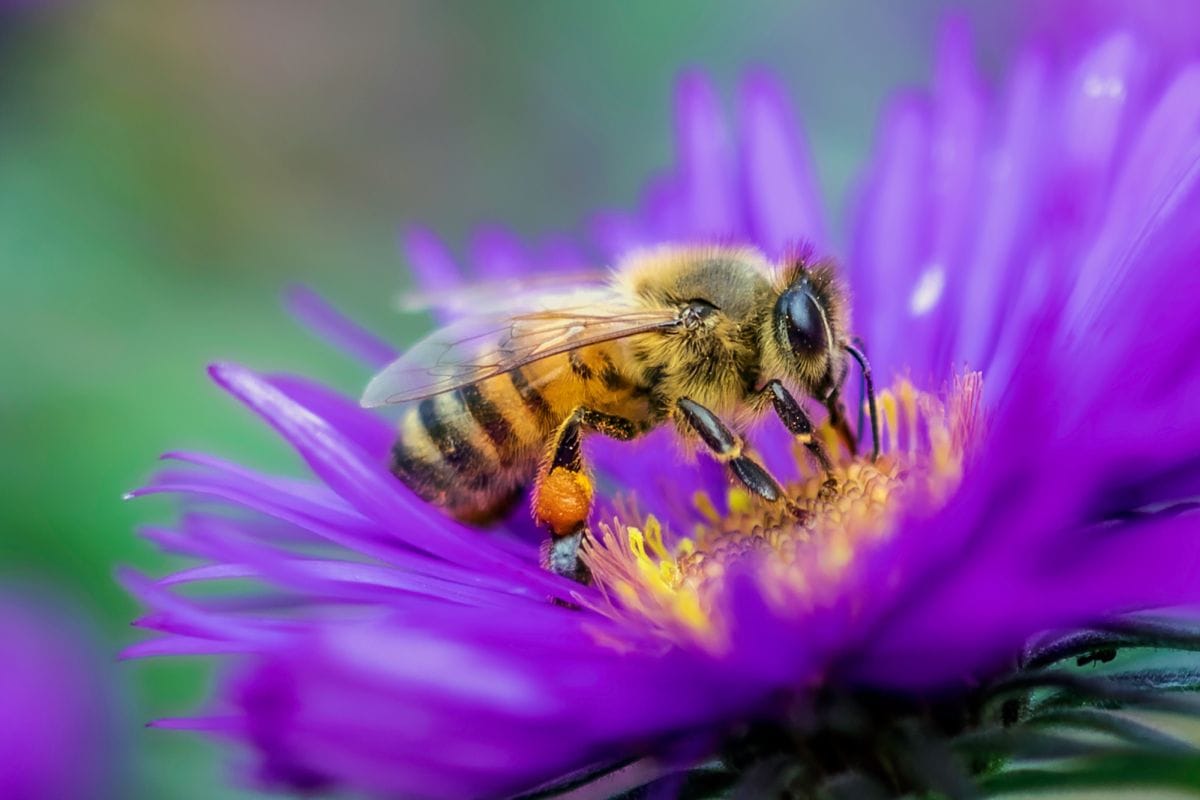
Honey bees from Europe are considered a nett positive despite being an invasive species. Wild honeybee populations are abundant, even though honeybees may be found all around Australia and are commonly maintained by beekeepers. They prefer to nest in trees and shrubs, although holes in the ceiling or walls make suitable substitutes.
Although bees are mostly calm creatures, their stings may be unpleasant and pose a serious risk to people who are allergic. Natural gaps in the construction, such as weep holes and unplanned gaps, such as holes surrounding windows or fractures in the brickwork, will provide honeybees access to the inside of a building. Honey bees primarily cause harm because their honey may eat away at wall components and attract other pests.
Mortar Bees
Mason bees, sometimes known as mortar bees, get their name because they will gnaw through the mortar between bricks to get into the wall cavity (though they will use preexisting openings, such as weep holes, if they can find them).
Their activity might weaken walls in the event of a serious attack. Solitary bees pose no danger to people since they don't construct communal nests; instead, they use the wall cavity as a location to deposit their eggs. They often choose sunny walls to raise their young.
European Wasps
Invasive European wasps are only found in temperate regions of Australia, namely south of a line connecting Perth and the Hunter Valley on opposite coasts. Their broods can swell to over a hundred thousand members. They are a very deadly and aggressive paper wasp species capable of launching many simultaneous attacks. Even though eighty per cent of European wasp nests are often buried (for instance, in a depression in a barrier), they will also nest in attics and occasionally in walls.
The eaves are a common entry point, but they may get into the attic through any aperture in the walls, such as those surrounding the windows and doors, or through the weep holes. Despite their relatively low destructive potential, they nonetheless pose a serious risk to human life.
Native Paper Wasps
Australia is home to several unique species of native paper wasps. Their nests are substantially smaller than those of European paper wasps, and while their sting is just as unpleasant, they are far less aggressive. In addition, nesting cavities are avoided by native paper wasps, who instead choose sheltered spots outside the structure, such as under the eaves.
Mud Dauber Wasps
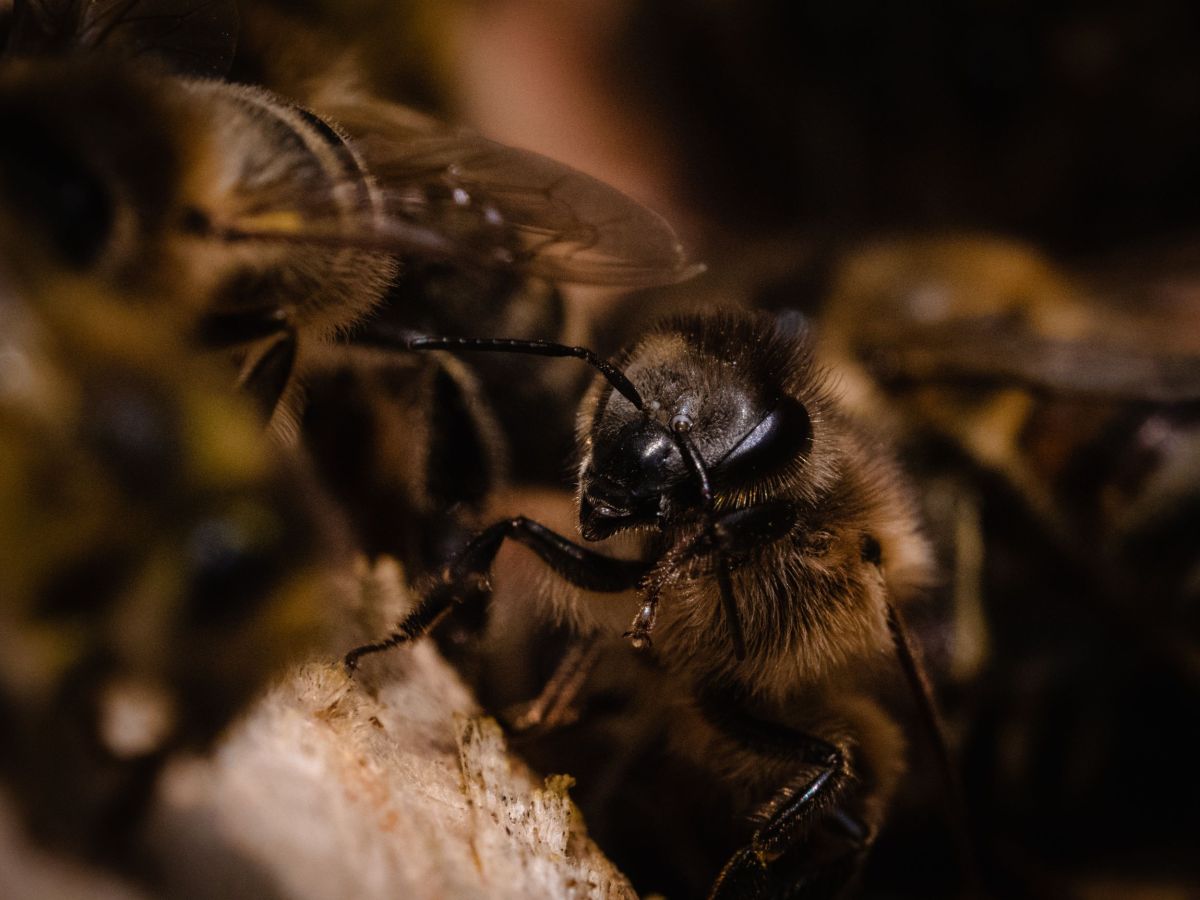
The breeding habits of the mud dauber or potter wasp, a common insect across Australia. Their nests are only ever used for a short period of time while the young are developing. To feed their young, they construct mud capsules and insert a paralysed spider or caterpillar. They need a flat surface to construct their nests, and they prefer to do it in corners or at the joint between the wall and the ceiling.
Nests of mud daubers and potter wasps are commonly found under eaves but may also be constructed in sheds or other roof cavities. On the other hand, weep holes are highly favoured because of the excellent support they offer to mud cells.
While they may not inflict much physical damage, they can hinder ventilation and moisture from escaping the house by obstructing weep holes. In addition, it can lead to difficulties with moisture in the wall cavities and possible rotting of wood parts if they plug up many weep holes in the same piece of wall.
How To Safely Remove A Wasp Nest?
The wasp nest discovery in the yard or close to a doorway might be frightening. Homeowners are understandably anxious when confronted with a wasp nest with aggressive-looking insects.
Anyone who has experienced a wasp sting can attest that it is unpleasant and inconvenient. Moreover, the fact that wasps frequently inflict many stings can worsen matters. All of this emphasises the significance of promptly eliminating wasp nests upon discovery.
Locating the Nest
The wasp nest must be located before any attempt at elimination may be made. Wasps are less dangerous than bees, so it's typically okay to follow them once they've finished eating. Also, the fact that they congregate in tiny flocks and travel in a tight formation makes them easier to see. Wasp nests are typically found in the following places:
- Under leaves: Paper wasps build paper bags–like nests with entrance holes under leaves.
- In doorways: Wasps are a common nuisance; some species build their nests on the top of doors or inside the frame.
- Roof cavities: Since wasps can build nests indoors and out, finding them in the unused attic or wall space is not unusual.
- Bird feeders: Wasp nests can also be seen around bird baths and feeders.
Considerations Before Attempting Nest Removal
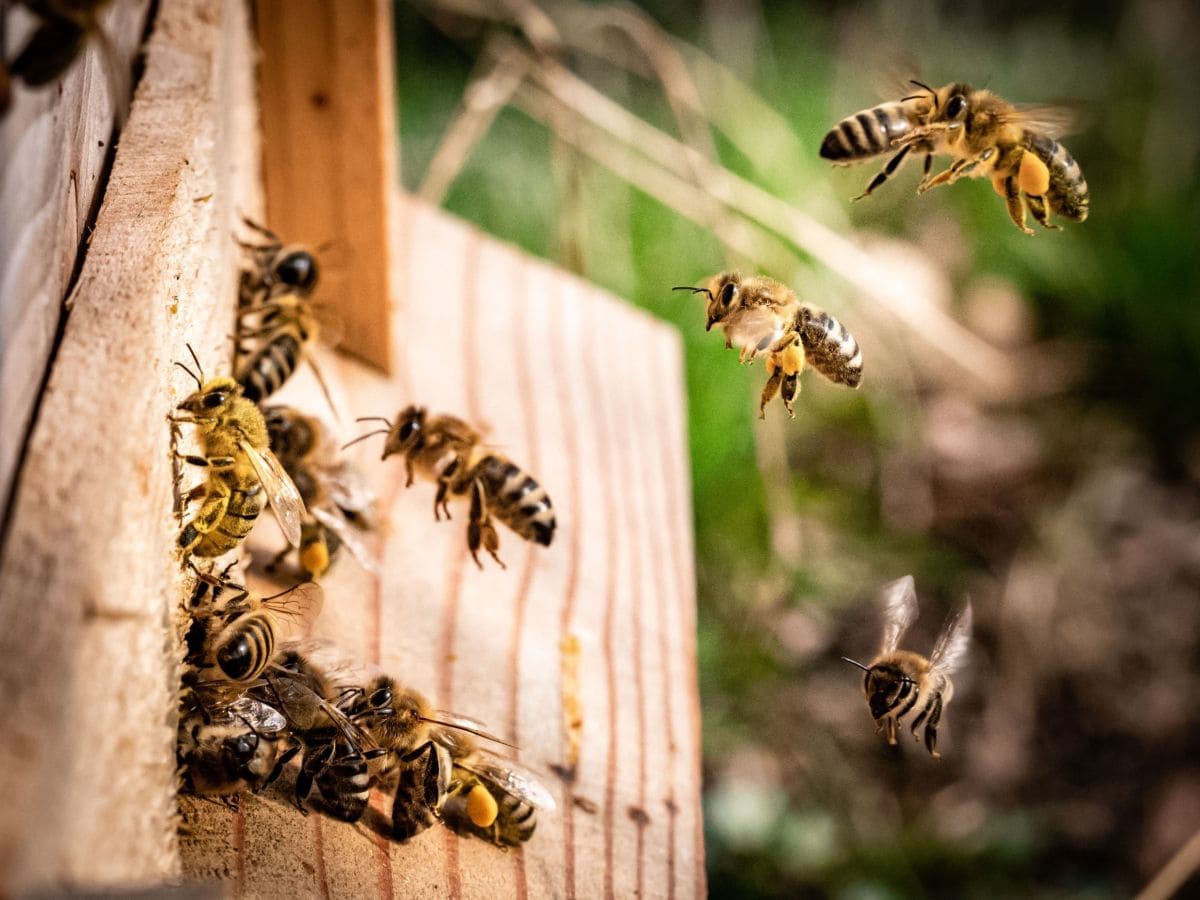
Your initial reaction may be to destroy the wasps' nest or to kill the insects. But remember, wasps are just as crucial to our environment as bees. Equally important to the ecosystem is the function they perform as natural pollinators. Therefore, removing the wasp nest could be better than destroying it. No matter your path, safety should be considered.
- Put on some protective gear; anything snug and heavy will leave no openings for the small stingers to penetrate. Bring some sturdy gloves, just in case.
- Since wasps typically only build their nests at night, removing the nest will increase your chances of getting all the wasps within. They will just build a new nest in the same spot if you try to relocate an empty one during the day.
- For disposal, a big plastic container with a cover should be used. Gently knock the nest off its perch by sliding the container over it. If you don't want a stray wasp to get out, keep it as near the other surface as possible. Put the lid on the container once you've placed the nest inside.
- Before removing the nest, make sure you have a plan for where the birds will go. Remember that moving them too near their previous home may prompt them to return. Don't move them, though, if doing so might put others in danger. Choose instead a wilderness location rarely visited by people and their pets. Quickly drop the container on the ground and take off the lid. You can safely remove the nest from the container by pulling it out from under the rim without disturbing the wasps within. You may even abandon the container if you choose. It's preferable to the potential danger of being stung by a swarm of wasps.
- Consult the experts: In such cases, you may require the help of a pest controller from Dawson's. It could be best not to risk an allergic reaction if the nest is particularly large. Our crew has the knowledge, equipment, and protective gear necessary to eradicate the next from your home.
Simple Ways to Deter Wasps from Your Home
We suggest whipping up essential oil and water spray to ward off wasps. To prevent wasps from establishing nests, spray the places where they have been spotted before. You may also keep them out by spraying these natural repellents around your home's entrances and roof vents. The following essential oils have been reported to deter wasps:
Vinegar
Vinegar is a multitasking ingredient that may be used in the kitchen, the bathroom, the bakery, and even to kill weeds. And you won't believe this, but it works surprisingly well against wasps. They are drawn to it. Acetic acid, the smelly component of vinegar, has been found to be an excellent pest-luring remedy when diluted with water. Because vinegar is mostly water (with around 4% acetic acid added), it may be used to lure wasps into a trap. Combine equal parts of apple cider vinegar, sugar, and water in a bowl. Combine all ingredients and set the trap near the nest; the occupants will drown.
Oil Mix of Clove, Geranium, and Lemongrass
Based on this study, a blend of clove, geranium, and lemongrass essential oil effectively deters wasps. Under eaves, and other ledges and cracks are common places for wasps to establish nests, so fill a spray bottle with dish and water detergent and apply the mixture there. Since the solution is safe for plant life, you may even spray it on your vegetation.
It would be impracticable to spray essential oils over the whole region in search of paper wasp nests, so instead, focus on places where you have previously discovered nests.
Water and Soap
An Australian specialist on environmentally friendly wasp eradication recommends using a solution of two teaspoons of dish detergent in a spray bottle full of water to eliminate tiny hanging nests. Because the soap blocks their spiracles, they expire practically immediately.
Peppermint Oil
In the same vein, peppermint oil was found to have potential as a wasp repellent. Made from mint oil, can be used to eliminate preexisting nests; alternatively, you can spray it on your plants and in public spaces where they congregate, as stated above.
Wasp Traps
Wasp traps operate by ensnaring the insects within a container, enticing them with a sweet liquid lure such as sugar water. One method involves removing the top of a two-liter bottle and inverting it within the bottom, or creating a small hole in the top for a simple and convenient homemade trap. For optimal placement, it is recommended to position the wasp trap on a nearby tree limb.
If constructing your own trap seems daunting, there are alternative options available that have received positive reviews online. However, it is important to note that traps may not always be effective, as they might only capture passing wasps instead of the actual nest-building wasps causing the issue. To maximize efficacy, it is recommended to position the trap near the entrance of the nest.
Patch Up Cracks
Implementing preventive measures is crucial in safeguarding homes against wasp invasions. It is advisable to address any gaps in window screens and seal the openings around electrical wire entry points in the house.
Timing plays a significant role in these actions, with late fall being an opportune period as most worker wasps have perished, or early spring before nest activity resumes. By taking these proactive steps, homeowners can greatly reduce the risk of wasps swarming into their living spaces.
Conclusion
Wasps are a typical annoyance because they often build nests near or on human-made structures. Seal any holes in the outside walls, get rid of any places where wasps could lay eggs, get rid of any places where they could hide, hang fake nests, and engage a Melbourne pest control service. Wasps are clearly identifiable due to their long, slender bodies, two sets of wings, and small waists; they belong to the order Hymenoptera. In order to avoid having wasps invade your home this summer, follow these steps. Wasps and bees come in a rainbow of colours and sizes, from millimetres to centimetres.
Some species are known to be aggressive and can inflict injury to humans, while others employ their stingers to defend their colonies and themselves. Both European Honey Bees and Mortar Bees may construct mud nests in masonry. Despite being an invasive species, European Honey Bees are nett positive; nonetheless, their stings can be painful and dangerous for those who are allergic. Mortar bees can access the wall cavity by gnawing through the mortar between the bricks. The native paper wasp, European wasp, mud dauber or potter wasp, and solitary bees are all common insects in Australia.
The local paper wasp is much smaller and less aggressive than its European counterpart. Potter wasps, also known as mud daubers, typically build their nests in nooks and crannies, such as the space between a wall and the ceiling. Mud cells benefit greatly from weep holes. Wasp nests can block airflow, which can lead to mould and mildew within the home as well as rotted wood in the wall cavities. It is crucial to find the nest and think about potential dangers before attempting to remove a wasp nest.
It may be preferable to remove the nest instead of destroying it, as wasps are ecologically equally as vital as bees. Information on how to safely and effectively remove a wasp nest from a residence is the focus of this article. A large plastic storage bin with a lid would be ideal for this purpose. It's crucial to establish a backup plan for the birds before attempting to remove the nest. It may be necessary to call in a pest control expert from Dawson's if the nest is huge.
Wasps can also be warded off with water and essential oil spray. To lure wasps into a trap, you can use essential oils like vinegar, acetic acid, clove, geranium, and lemongrass; to spray under eaves and other ledges and cracks, you can use a blend of clove, geranium, and lemongrass essential oils. Finally, you can spray around eaves and other ledges and cracks with dish and water detergent using a spray bottle.
Content Summary
- Wasps can pose a risk to those allergic to their sting and are a summertime nuisance.
- Sealing gaps in external walls can prevent wasps from entering your home.
- Removing potential breeding grounds like garbage cans and pet food bowls can discourage wasps.
- Hanging imitation nests can prevent actual wasps from establishing nests on your property.
- It is advised to leave existing wasp nests alone and contact a pest control service for removal.
- Wasps, bees, and ants are insects classified in the order Hymenoptera.
- Wasps have long, lean bodies, two sets of wings, and tiny waists.
- Wasps use their stingers to defend their colony and themselves.
- Some wasp species are good for the environment as they eat problem insects.
- European Honey Bees prefer nesting in trees and shrubs but can use openings in ceilings or walls.
- Mortar Bees gnaw through the mortar between bricks to access wall cavities.
- Invasive European Wasps are aggressive and can nest in attics and walls.
- Native Paper Wasps have smaller nests and are less aggressive than European paper wasps.
- Mud Dauber Wasps construct nests using mud and prefer corners or joints between walls and ceilings.
- Mud dauber nests can obstruct ventilation and cause moisture problems in walls.
- Safely removing a wasp nest requires locating it first.
- Wasp nests can be found under leaves, in doorways, roof cavities, and around bird feeders.
- Safety precautions should be taken when attempting nest removal.
- Wearing protective gear and removing the nest at night increases chances of success.
- Consultation with pest control experts may be necessary for large nests.
- Essential oil sprays can deter wasps, including vinegar, clove, geranium, and lemongrass oil mixes.
- Water and soap solutions can be used to eliminate small hanging nests.
- Peppermint oil can act as a repellent for wasps.
- Wasp traps using sweet liquid lures can be effective.
- Patching up cracks in window screens and sealing openings can prevent wasp invasions.
- Late fall or early spring is an opportune time for preventive measures against wasps.
- Taking proactive steps can greatly reduce the risk of wasp swarms in homes.
- The blog provides additional information and helpful hints for keeping homes wasp-free.
- It is important to consider safety and environmental factors when dealing with wasps.
- Dawson's pest control company is recommended for professional help with wasp removal.
Frequently Asked Questions About Preventing Wasps From Building Nests
There are several natural remedies that can help repel wasps:
- Peppermint oil: Wasps dislike the scent of peppermint oil, so placing a few drops of it on cotton balls and leaving them around the areas where wasps frequent can help repel them.
- Citronella oil: Citronella oil is another natural insect repellent that can be effective against wasps. You can use it the same way as peppermint oil, by placing a few drops on cotton balls and leaving them around your property.
- Cucumber: Wasps do not like the smell of cucumbers, so leaving slices of cucumber around your home or garden can help repel them.
- Vinegar: Mix equal parts water and white vinegar in a spray bottle and spray it around your property to repel wasps. This solution can also be used to clean outdoor surfaces and furniture to deter wasps from nesting there.
- Essential oils: Other essential oils, such as eucalyptus, lemongrass, and tea tree oil, can also be effective at repelling wasps. Mix a few drops of these oils with water in a spray bottle and spray it around the areas where wasps are a problem.
Note: While these natural remedies can be effective at repelling wasps, they may not work for all situations. If you have a serious wasp infestation, it is best to contact a professional pest control service.
Certain plants, such as mint, eucalyptus, and wormwood, have been known to repel wasps. Planting these around your property may help keep wasps at bay.
Yes, wasps can be attracted to bright colors and floral scents. Avoid wearing bright colors or using scented perfumes or lotions when spending time outside.
- Colors: Wasps are attracted to bright and vibrant colors, especially yellow, which they associate with flowers and nectar. Therefore, wearing bright clothing or using brightly colored outdoor decor can attract wasps. They may also be attracted to other colors such as white and blue.
- Scents: Wasps are also attracted to certain scents, particularly those that are sweet or fruity. This includes the smell of ripe fruits, sugary drinks, and even perfumes and lotions that have a sweet scent. They may also be attracted to the smell of meats and other foods, especially if they are rotting or spoiled.
It's important to note that different species of wasps may be attracted to different colors and scents, so it's difficult to make a blanket statement about their preferences. Additionally, some wasps may be more aggressive than others, so it's best to avoid attracting them in the first place by keeping food and drinks covered and disposing of trash properly.
Spraying insecticide may deter wasps from building nests, but it is not a long-term solution. It is best to remove any potential nesting sites and take preventative measures to keep wasps away.
Wasps build nests for the purpose of providing a safe place for their offspring to develop and grow. The nests also serve as a shelter for the wasps to rest and protect themselves from predators.
Female wasps are responsible for building the nest. They create the nest by using a combination of wood fibers, saliva, and other materials, which they shape into a paper-like material. The nest is then constructed in a sheltered location, such as a tree or under the eaves of a building.
